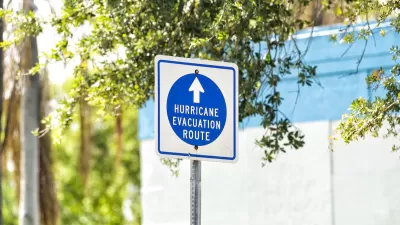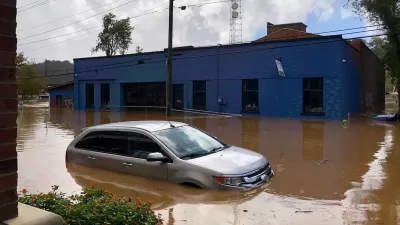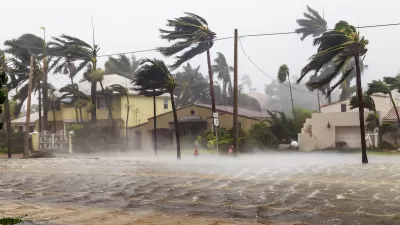Hurricane Matthew seemed to have hit a glancing blow on the southeastern seaboard over the weekend, until the floodwaters, and the death tolls, started to rise.
"Hurricane Matthew may have wandered out to sea, but the watery mess it left behind in North Carolina keeps getting worse and worse," reports Brad Plumer.
Plumer, writing on Tuesday, October 11, reports that floodwaters have been rising after the Hurricane dropped record amounts of rain on the state over the weekend.
In a separate article, Elena Gooray provides historic context for the rainfall:
The storm swept in by Hurricane Matthew has produced rainfall that exceeds the level expected about once every 1,000 years, according to a statistical analysis using National Oceanic and Atmospheric Administration data.
Moreover, researchers have already been able to connect the record floods with the effects of a warming climate:
The new rainfall records were enabled by warming in the ocean and coastal atmospheres, which hold more water as temperatures increase — with a few cities across the Southeast reporting record levels of air moisture during the storm.
Those kinds of epoch-defining rain levels were also witnessed in Louisiana several times earlier this year.
President Obama has declared both North Carolina and South Carolina as disasters. In September, Tim Dominick penned a prescient letter to the editors of The State, calling on South Carolina to improve dam safety, one year after destructive floods ravaged the state.
FULL STORY: North Carolina’s record floods: “you have got to see it to believe all the devastation that has occurred"

Maui's Vacation Rental Debate Turns Ugly
Verbal attacks, misinformation campaigns and fistfights plague a high-stakes debate to convert thousands of vacation rentals into long-term housing.

Planetizen Federal Action Tracker
A weekly monitor of how Trump’s orders and actions are impacting planners and planning in America.

Chicago’s Ghost Rails
Just beneath the surface of the modern city lie the remnants of its expansive early 20th-century streetcar system.

Bend, Oregon Zoning Reforms Prioritize Small-Scale Housing
The city altered its zoning code to allow multi-family housing and eliminated parking mandates citywide.

Amtrak Cutting Jobs, Funding to High-Speed Rail
The agency plans to cut 10 percent of its workforce and has confirmed it will not fund new high-speed rail projects.

LA Denies Basic Services to Unhoused Residents
The city has repeatedly failed to respond to requests for trash pickup at encampment sites, and eliminated a program that provided mobile showers and toilets.
Urban Design for Planners 1: Software Tools
This six-course series explores essential urban design concepts using open source software and equips planners with the tools they need to participate fully in the urban design process.
Planning for Universal Design
Learn the tools for implementing Universal Design in planning regulations.
planning NEXT
Appalachian Highlands Housing Partners
Mpact (founded as Rail~Volution)
City of Camden Redevelopment Agency
City of Astoria
City of Portland
City of Laramie





























